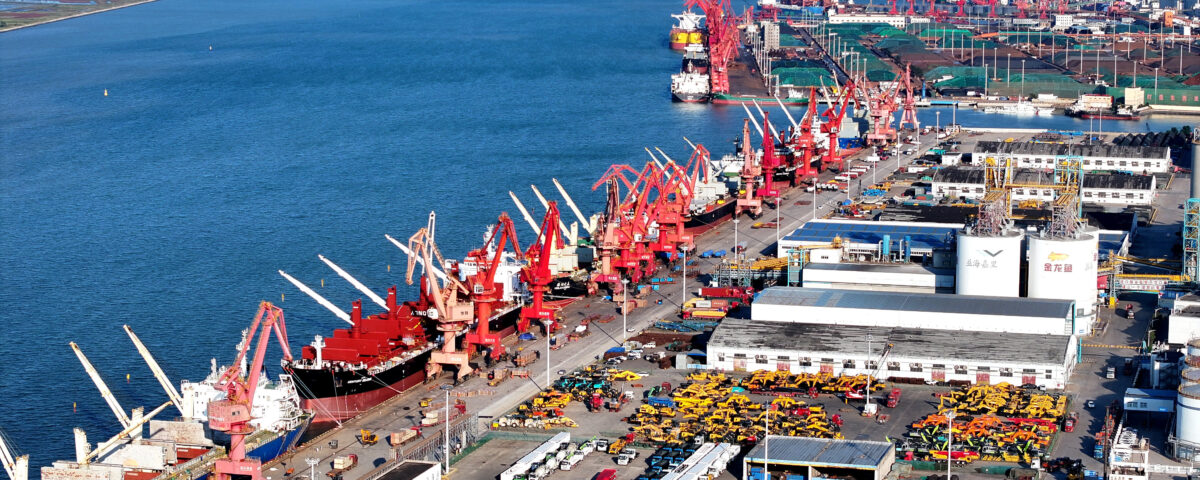US Futures Show Signs of Recovery Amid Tariff Turbulence – Market Analysis
Tháng 4 11, 2025UK GDP Growth: A Silver Lining Amidst Economic Uncertainty
Tháng 4 11, 2025Recent Developments in U.S.-China Trade Relations and China’s Strategic Response
As of April 2025, the ongoing trade tensions between the United States and China have escalated significantly, prompting profound strategies on both sides. The latest developments indicate a pivotal moment in global trade dynamics, particularly with the introduction of new tariffs and the subsequent retaliatory measures.
U.S. Tariffs on Chinese Goods
In an effort to address what it perceives as unfair trade practices, the U.S. government has imposed a steep tariff of 34 percent on a range of Chinese goods. This decision is part of a broader “reciprocal tariff” policy that seeks to address trade imbalances not just with China, but with several other countries as well. The rationale behind this aggressive economic maneuver is to protect American industries and promote domestic manufacturing. However, experts warn that such tariffs could potentially hinder international trade relations and contribute to global economic instability.
China’s Retaliatory Measures
In a swift and calculated response, China has escalated its retaliatory tactics by imposing an 84 percent tariff on imports from the U.S. effective April 10, 2025. This striking increase underscores China’s commitment to defending its economic interests and retaliation against the U.S. actions. Furthermore, China has introduced additional measures, which include expanding export controls on critical materials and placing several U.S. companies on its “Unreliable Entity List.” These actions reflect China’s strategy to exert pressure on U.S. businesses and highlight the interconnectedness of global supply chains. Recently, China’s President Xi Jinping convened top global CEOs to discuss escalating U.S.-China trade tensions, emphasizing the nation’s commitment to stability and collaboration, as well as its strategic economic engagements. For more insights on this meeting and its implications, visit Three Strategic Moves by China Xi.
Mitigation Strategies Adopted by Chinese Exporters
Facing the brunt of augmented tariffs, Chinese exporters are agilely employing various strategies to mitigate the economic fallout. One significant approach is supply chain diversification, where manufacturers are relocating production facilities or sourcing raw materials from countries that remain unaffected by U.S. tariffs. This strategy not only safeguards their profit margins but also ensures the continuity of operations despite geopolitical challenges.
Additionally, there is a notable shift toward export market diversification. Chinese companies are increasingly focusing on growing markets outside of the U.S., thereby reducing their dependency on American consumers. By tapping into new consumer bases in regions such as Southeast Asia, Africa, and Europe, they aim to cushion losses attributed to dwindling trade with the U.S.
Moreover, businesses are adopting price adjustments as another form of mitigation. Depending on their market positioning, some companies may choose to pass the increased costs onto consumers, while others might absorb these additional expenses in an effort to maintain market share and customer loyalty.
Economic Implications and Projections
The ramifications of such escalating tariffs are significant. With the increased economic strain, analysts project a potential 2.4 percent decline in China’s GDP growth rates for the year 2025. This predicted downturn is indicative of the broader economic impacts of prolonged trade conflicts, which can stifle consumer confidence and hinder industrial productivity.
In conclusion, the recent developments in U.S.-China trade relations exemplify the complexities of current global economic dynamics. Both nations are navigating a wave of challenges that may reshape their economic landscapes for years to come. As the situation evolves, the responses from both countries will be keenly observed, not only for their immediate effects but also for their long-term implications on global trade.

